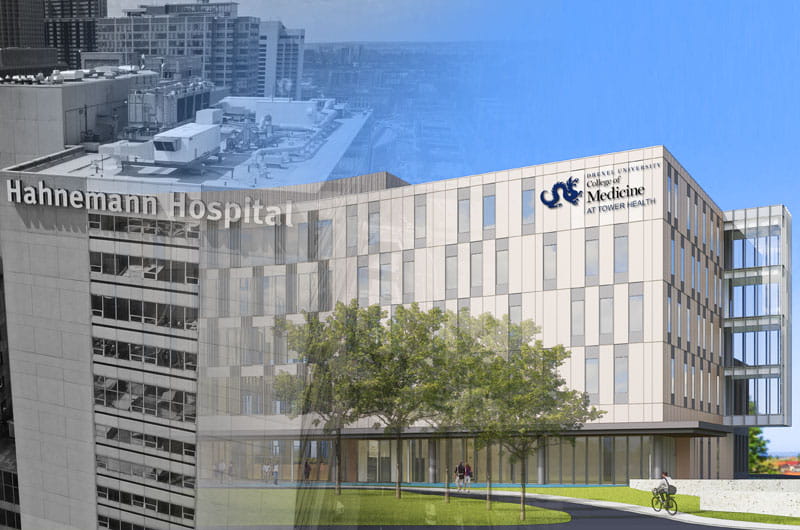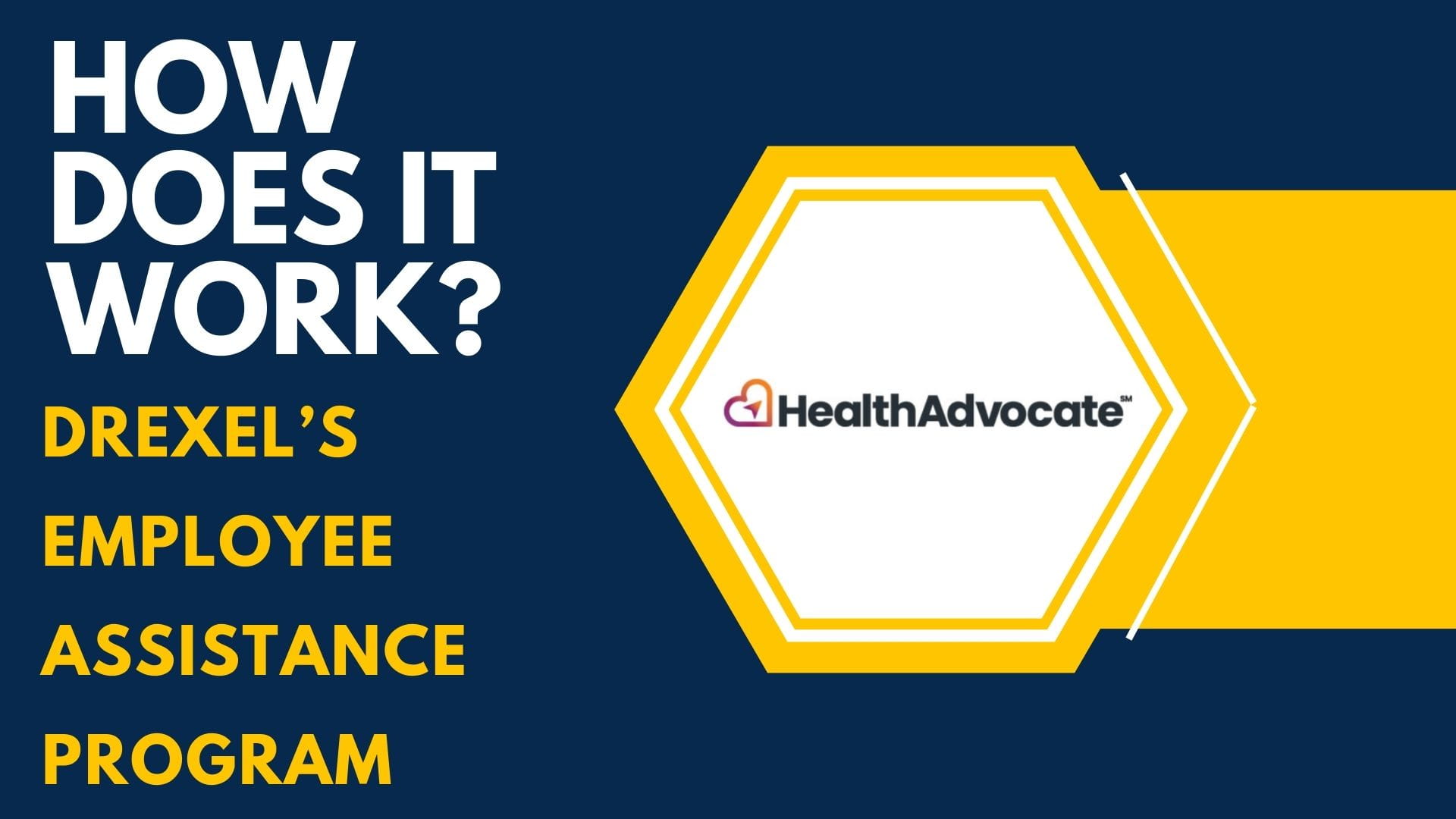FAQ: How Hahnemann’s Closing Impacts Drexel

On June 26, the owner of Hahnemann University Hospital announced it would file for bankruptcy and close the hospital within weeks. Though Hahnemann's closure has been devastating to everyone affected, Drexel is prepared.
Several years ago, Drexel leadership began seeking a successor hospital partner to prepare for the 2022 conclusion of Drexel's academic affiliation agreement with Hahnemann. As a result, earlier this year Drexel announced a 20-year academic affiliation with Tower Health, a six-hospital system with locations in the Philadelphia area, to educate Drexel medical students at a new additional location being built in Reading, Pennsylvania.
While Drexel has had to accelerate its plan by a couple of years due to the abrupt closure of Hahnemann, the groundwork already laid will minimize disruptions to people’s lives as much as is possible under the circumstances. As President John Fry says, “This is not the way in which we wanted this to happen nor the timeframe we wanted. But we had a very clear sense that this day would come. And I think we’ve been very well prepared for it.”
Here is an update on the situation and its impact.
How did we get here?
Hahnemann is a 496-bed teaching hospital in Center City Philadelphia where more than 500 medical residents and fellows, as well as about a third of Drexel medical students, received training. Its financial troubles have a long history, some of which overlap Drexel’s history. The hospital was once owned by Pittsburgh-based Allegheny Health, Education and Research Foundation until AHERF collapsed in 1998 and sold its hospital assets through a bankruptcy to Tenet Healthcare, a national, publicly held for-profit hospital chain. Because Pennsylvania law did not allow a for-profit company to own the medical school, Drexel agreed at that time to operate the medical school with substantial financial support from Tenet and ultimately exercised an option to assume control of the medical school in 2002. In January 2018, Tenet sold Hahnemann University Hospital and St. Christopher’s Hospital for Children to American Academic Health System (AAHS), a for-profit company led by California investment banker Joel Freedman. According to reports, Hahnemann was losing between $3 million and $5 million each month before various AAHS-related entities declared bankruptcy.
What is Drexel’s relationship to Hahnemann?
Drexel doesn’t own or have investments in Hahnemann. The hospital’s operations and finances are wholly separate from the College of Medicine. Drexel’s main business relationship with the hospital is an academic affiliation agreement that designates Hahnemann as the medical school’s primary academic partner for its medical student training and provides for Drexel’s faculty to manage the hospital’s residency program through 2022. Hahnemann also contracts with Drexel for some other physician services, such as emergency room coverage and clinical services. Altogether, Hahnemann pays Drexel $24 million a year for Drexel’s services. In February, American Academic Health System fell behind in its payments, and now owes Drexel $15.2 million. Despite being AAHS’s second-largest unsecured creditor with no realistic hope of meaningful payment, Drexel has continued to provide services to ensure that the community’s health care and the medical student and residency training needs are met.
What is a resident and how does medical education generally work?
Residents and fellows are post-graduate doctors-in-training from any of the medical colleges across the country and internationally. Each year’s batch of medical school graduates “matches” with a hospital, where they train in a specialized area of medicine in a patient setting. Hospitals may be eligible to receive a payment from Medicare in exchange for the hospital providing the training of the residents and fellows. Payments are based on the direct expense of training a resident, plus other factors such as a hospital’s total Medicare patients, capacity and residents. When a hospital closes, Medicare will shift the reimbursement of each current resident to the hospital which agrees to provide the remaining years of training for that resident.
What will happen to Hahnemann’s 500-plus medical residents and fellows?
Residents and fellows will have opportunities to continue their training at a location of their choice and will be free to move to other hospitals once the programs at Hahnemann are closed. Hahnemann plans to transfer its hospital license, Medicare Agreement and residency employment contracts to an alternative provider that will take on the responsibility for completion of resident training for any residents who choose that option. Tower Health has offered to be the transferee in such a transaction, and will accommodate as many current residents and fellows as it can. Tower Health is also applying for additional residency positions with accreditation agencies in order to provide continuity with residents and faculty who teach them. Drexel is working with Tower Health to create new programs that could keep entire groups of residents together (e.g. family medicine and psychiatry). In the meantime, some regional hospitals such as Jefferson Health and Cooper Health have already publicly invited displaced residents to apply to their programs.
What happens to the medical students who do their clinical training at Hahnemann?
About 30 percent of Drexel’s third- and fourth-year students were in clinical clerkships at the hospital. They have all been reassigned to other hospitals including some of Drexel’s regional campus partners. These affiliates — Abington, Crozer-Chester Medical Center, WellSpan York, Allegheny General and Kaiser Permanente in California, and now Tower Health — have agreements to allow Drexel’s clinical faculty to do research and see patients at their sites.
What will happen to Drexel University Physicians, the practice group training Hahnemann’s medical students and residents?
Prior to Hahnemann’s announcement, Tower Health and Drexel already had intentions to merge the Tower Health Medical Group and Drexel University Physicians practices in January 2020. However, Hahnemann’s closure forced some painful adjustments to this plan, causing some of our health care service lines and positions to be eliminated. Fortunately, Tower Health Medical Group has agreed to offer employment to about 60 percent of the 800 faculty and staff employed by Drexel University Physicians. Those joining Tower Health Medical Group will be able to continue working in their current practices and locations. Of the 40 percent being displaced, most will be given preferential consideration for comparable jobs in the Tower Health system, though possibly outside of Philadelphia. Drexel regards this as an outstanding expression of Tower Health’s commitment to the College of Medicine and the city of Philadelphia.
What if my doctor is a Drexel Medicine physician?
Primary care physicians will continue to provide care in their current settings, as will a number of specialists. Patients who are affected by service line closures are being contacted and offered options for future care. In all cases, Drexel Medicine will work with patients’ new providers to ensure continuity of care.
Will Drexel’s College of Medicine students or faculty be impacted?
Although Drexel has taken all possible steps to smooth this transition, there has been significant disruption to our faculty and staff, and to students facing new rotational schedules. We are using all resources available to work with those affected to minimize the short-term impact. Drexel’s medical students, as well as College of Nursing and Health Professions students on clinical rotation, have already been reassigned to the more than 20 other affiliated training sites with which Drexel has agreements. Drexel will provide uninterrupted training for all students now and throughout their enrollment at Drexel. The education of undergraduate medical students and graduate students, and research, will all continue.
Couldn’t Drexel have bought Hahnemann and operated its own hospital as some other universities do?
Drexel would have been interested, if the hospital were economically viable. But Hahnemann came with liabilities of more than $300 million.
Could this undermine the College of Medicine’s stature or reputation?
There are significant challenges to work through now, but in the long term, the College of Medicine will have a stronger partner than it has ever had before. The reality is that the College of Medicine is substituting a struggling hospital with a well-capitalized, modern, high-performing one. The arrangement with Tower Health is not ad hoc; it has been years in the making and was undertaken to secure an excellent learning environment for students of the College of Medicine. Reputation is built on many other factors as well. There are only 154 medical colleges in the country and Drexel’s is the fifth largest. Each year, the College of Medicine receives 15,000 applications for 260 spots in the MD program, with an overall acceptance rate of just 5 percent. In addition, the medical school’s research awards have grown by one-third over the last two years, representing 32 percent of the research dollars brought in by the University. The college is also known for its record of fostering inclusion. For example, it runs the nationally recognized Executive Leadership in Academic Medicine (ELAM) program, which was the first in the country to develop women as leaders in academic medicine, and the College of Medicine enrolls people of color at higher rates than the national average. It offers some of the most innovative and rigorous academic programs available, incorporating the Drexel's expertise in engineering and technology into patient-centered medical training. The college is home to one of the nation's leading centers for spinal cord research; one of the foremost centers for malaria study; and a highly regarded HIV/AIDS program with extensive NIH-funded research in prevention and therapeutic interventions.
In This Article
Drexel News is produced by
University Marketing and Communications.

